According to statistics, every 4 inhabitants of the planet, regardless of age and physiology, suffer from varicose veins. Varicose veins are a predominantly genetic disease that can be caused by genetic factors. Any aspect of a disease such as varicose veins can trigger the mechanism, including an unhealthy diet, intense physical activity, or their complete absence. The clinical picture of the disease and the choice of treatment method depend on the stage and form of varicose veins, as well as the individual characteristics of the patient.
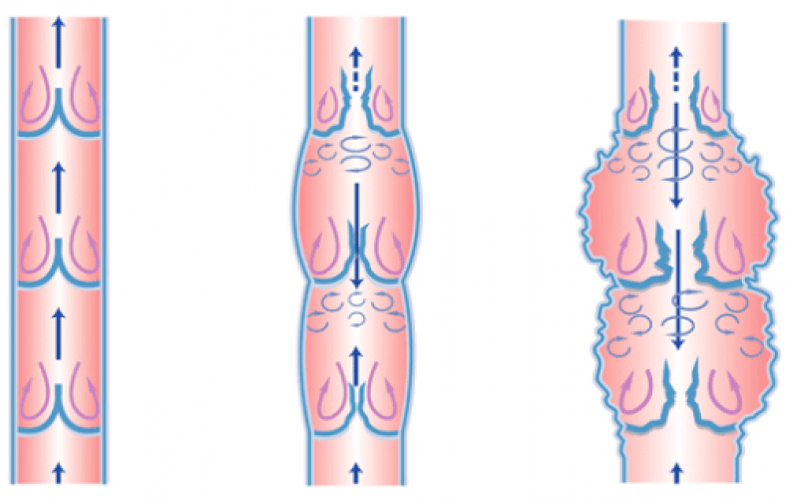
Pathophysiology and etiology
At present, it has been proven and confirmed that the main cause of the appearance of the main symptoms of the disease is heredity. Hereditary deficiencies, expressed in the transfer of genetic material responsible for the elasticity and tone of the venous walls, are passed on from generation to generation, causing the development of varicose veins. vein.
When there is a genetic predisposition, it is very difficult to avoid the appearance of the main symptoms of the disease, because any factor that is encountered by almost every normal person on a daily basis can be the reason, such as a type ofcatalyst for the initiation of pathological processes. Among the most common reasons, a negative effect can cause pathology, which is called:
- Lack of physical activity.
- Pregnancy and later childbirth.
- Excessive weight, especially with localization of fat masses in the lower body.
- Long-term use of hormonal drugs and potent drugs.
- Improper dietary approach.
- Postural diseases and sedentary lifestyle.
- Commit to regular tanning beds.
- Bad habits.
- Wear tight and tight clothing.
As such, varicose veins are primarily a genetic defect. The above causes of varicose veins, which are the result of a systemic effect, in which are various pathologies of the circulatory system, including varicose veins, are among the most common. However, in each individual circumstance, other reasons, among other reasons, can play a negative role. It is almost impossible to completely eliminate all pathogenic factors.
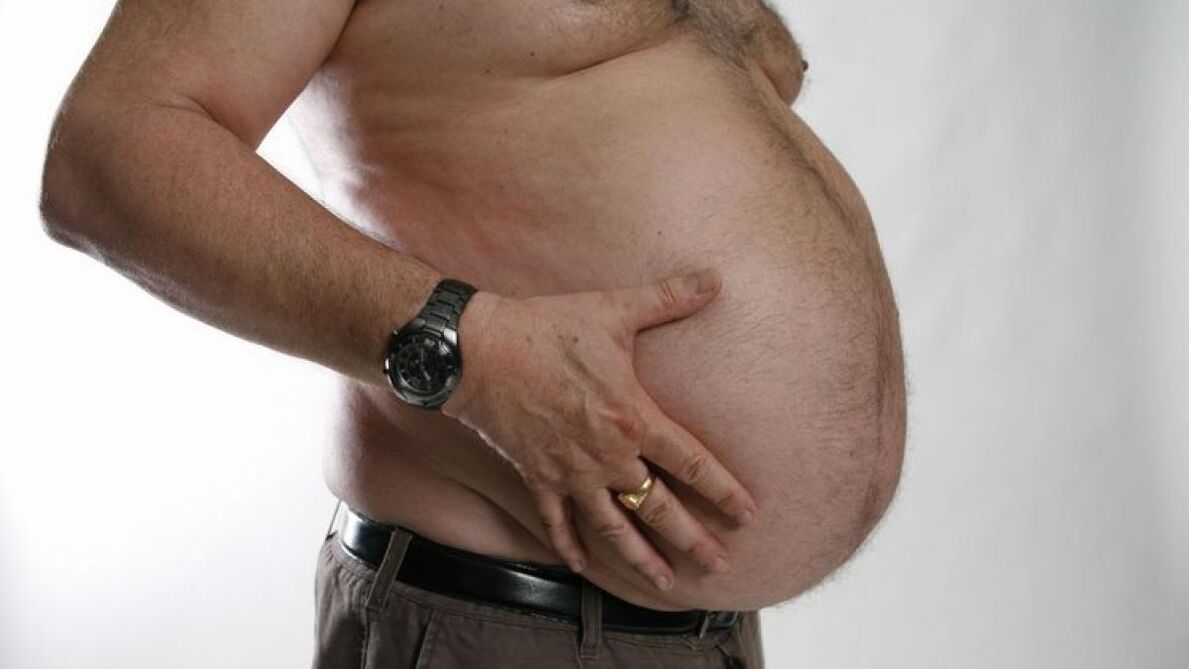
Excess weight can lead to varicose veins.
Clinical picture
The symptoms of varicose veins, regardless of the reason, can vary significantly depending on the stage and form of the disease, as well as other factors, such as lifestyle and anatomical features of the structure. structure of the venous system. Currently, there are six main stages of varicose veins, each of which is characterized by a number of characteristic symptoms and underlying causes.
Early stage. At the initial stage of formation, varicose veins are characterized by the appearance of the following symptoms:
- Tingling.
- Heaviness and pain in the legs.
- Burning, itching.
- Night cramps.
You may also note the visual symptoms of varicose veins as blue stars and veins. At this stage, the patient noted the appearance of edema after exercise and in the evening.
Second stage. According to scientific data, true varicose veins of the lower extremities, whatever the reason, begin precisely from the second stage of the pathogenesis. This is due to the fact that the symptoms that appear in the first two stages of varicose veins can be attributed to other diseases of the vascular system. During this stage, the patient experiences discomfort, tingling and pain in the legs, even after reasons such as short walks. In addition, the imaging symptoms of the disease are clearly visible: the vascular network, enlarged veins, the formation of dense bluish nodules on the skin. Consistent with a similar picture, the third stage proceeds with varicose veins.
In the fourth and fifth stages, with varicose veins, due to the starvation of tissues by oxygen, nutritional changes occur, manifested by the appearance of ulcerated areas. The skin with varicose veins is darker in color, the veins become pronounced, dense to the touch.
The seventh stage is characterized as the most complex and advanced form of the disease. During this period, varicose veins of the lower extremities provoke the development of irreversible tissue changes, the appearance of non-healing trophic ulcers, which often become the cause of dead skin areas.
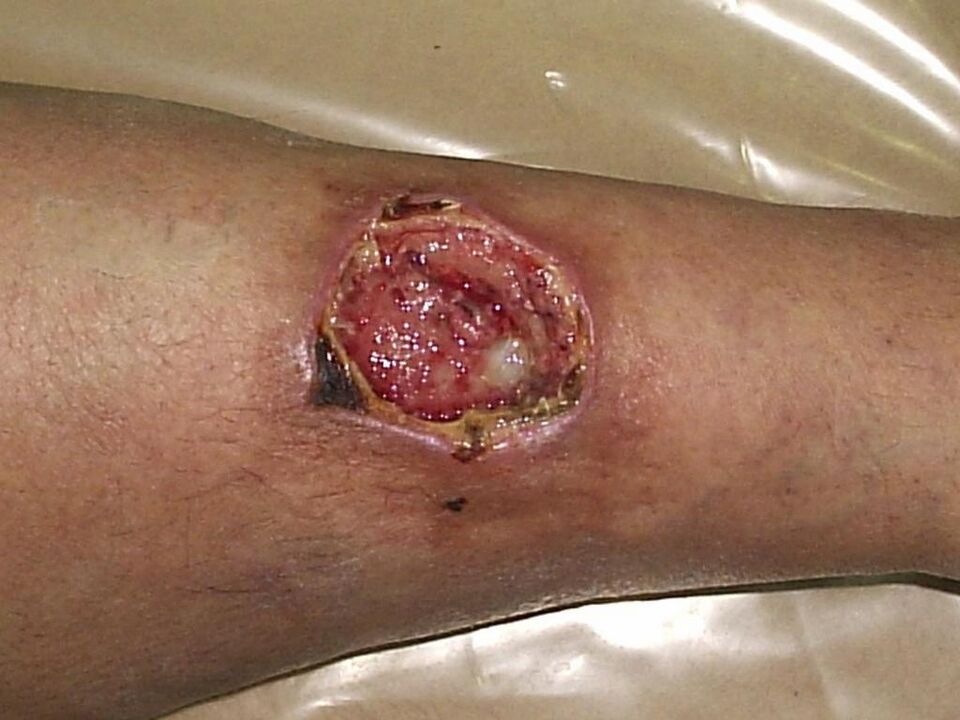
In the advanced stage of varicose veins, trophic ulcers appear.
Effective therapies
Modern medicine offers patients a number of basic treatments for varicose veins. In which, there are two main areas: invasive and conservative treatment of varicose veins. In turn, each of these directions is divided into their respective subgroups. For example, a conservative treatment option includes the use of external and internal medications.
Treatment of varicose veins is based on the use of radical treatments for inflamed areas of the vascular system. Depending on the stage and symptoms of the disease, different treatment options can be applied: from restoring the walls of damaged veins to their complete or partial removal. But the basic treatment of varicose veins provides a number of contraindications, the presence of which precludes the use of any appropriate procedure.
Effective treatment of varicose veins, aimed at achieving positive dynamics in the disease, is based on a complex combination of several types of therapy. For example, medication can be combined with certain types of physical therapy, compression underwear, and folk remedies.
In addition, when appointing some treatment methods for patients, patients also need to change their diet, exercise moderately, and minimize factors that make the disease worse.
Medicine
The medical treatment of varicose veins is mainly applied in the early stages of the disease, regardless of its cause. Alternatively, varicose veins can be taken orally and applied as an adjunct during invasive therapy. To treat the symptoms of varicose veins, drugs are used that have anti-inflammatory, regenerating, healing and normalizing properties of the veins. If there is a risk of infection of the affected tissues, treatment with antibacterial drugs is required.
In most cases, drug treatment is used in the early stages of the disease.
For severe painful sensations, analgesics can be used, the effect of which is to eliminate the symptoms, but not to treat the cause of the disease. People also practice the use of drugs that improve the composition of the blood, thin the blood, increase the body's resistance.
The use of the drug helps to reduce both the visual manifestations characteristic of varicose veins of the lower extremities, and the physiological: edema, pain, severity. However, treatment for varicose veins is aimed at eliminating the symptoms, not the cause of the disease. It is almost impossible to completely cure varicose veins and regenerate damaged varicose veins in this way.
Physical therapy
Physiotherapy is an excellent addition to a single varicose vein treatment complex. The only significant disadvantage of this type of therapy is the need to perform any procedures that are specific to medical facilities due to their specificity. A positive effect is achieved only if the treatment is carried out on a regular basis.
The following types of procedures bring maximum efficiency and convenience in the treatment of diseases:
- Electrophoresis.
- Laser radiation.
- Infrared radiation.
- Magnetic therapy.
But, despite all the benefits of physiotherapy prescribed to get rid of varicose veins in the legs, there are still some contraindications, so their treatment is completely excluded. As a rule, they include symptoms such as varicose veins such as trophic ulcers, changes in necrotic tissue, open wound surfaces.
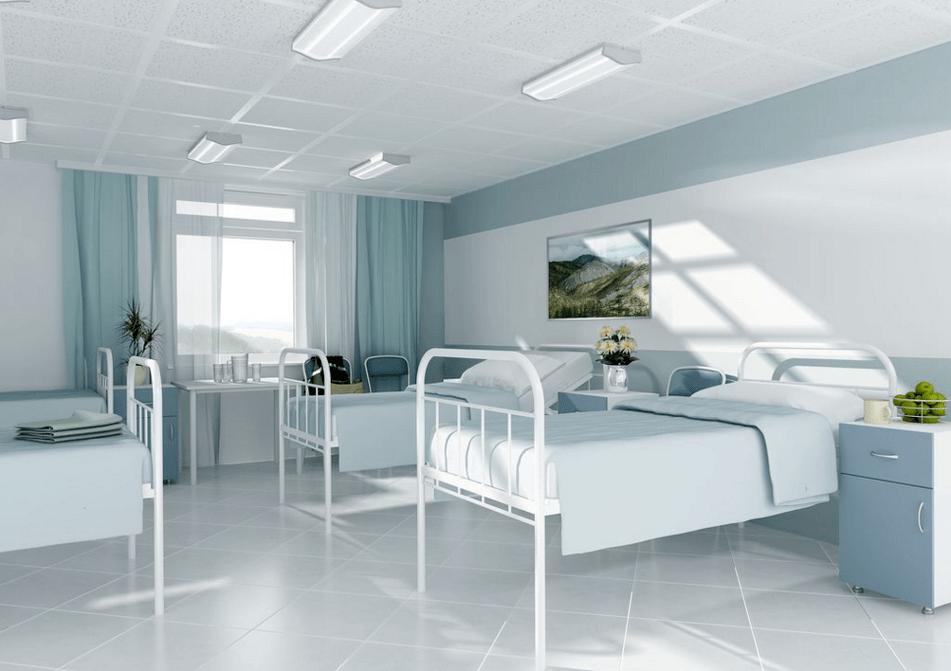
Physiotherapy can only be done in a medical facility.
Surgical intervention
Surgical removal of the affected veins through a proper procedure ranks as one of the most effective ways to deal with varicose veins. But it is used only in the most severe cases and is ignored, provided there is no positive momentum in the process of using invasive and conservative methods to treat the disease.
Surgical intervention is based on the complete removal of the affected vein. The procedure requires the administration of anesthetic to the patient concerned with varicose veins, hospitalization, and a long rehabilitation period. Depending on the cause of the disease and the indications, varicose vein surgery can be done as planned and emergency.
Invasive method
A relatively new trend in the field of veins is invasive methods of treatment, the effectiveness of which is not inferior to surgical manipulations. At the same time, when performing these procedures, patients do not need long-term rehabilitation. In addition, there are no contraindications and side effects. However, invasive methods may not be effective enough for the symptoms of end-stage varicose veins.
These include the following: sclerotherapy and laser irradiation. The first technique is used for the symptoms of varicose veins, both separately and as part of a medical complex. During sclerotherapy, a substance is injected into the damaged vein to promote rapid regeneration of cells and tissues. To get rid of varicose veins completely, it is enough to perform only five to six such courses.
Laser therapy is somewhat similar to the principle of treatment of surgery, allowing you to permanently eliminate the symptoms of varicose veins. During surgery, direct exposure to laser radiation through the skin. The laser destroys part of the tissue of the damaged vein, thereby stimulating its immediate contraction. The presence of scars or scars resulting from such a procedure is completely excluded.
Traditional method
Of course, the use of folk methods will not cure varicose veins permanently, but it is possible to reduce the visual and physiological manifestations of the disease somewhat. The main aspect of home therapy is regularity. It is possible to achieve good results and eliminate unpleasant symptoms with varicose veins only if the procedure is carried out daily and in accordance with accepted standards.
As the most effective procedures for the causes and symptoms of varicose veins, which can be performed at home, compressive methods based on different drugs and herbs are called. The following recipes are particularly popular:
- The pulp of a ripe tomato, ground into a pulp. An excellent remedy for varicose veins in the early stages of the disease. Apply to inflamed veins for two to three hours daily.
- Varicose veins of the lower extremities can be eliminated and the unpleasant symptoms reduced by using fresh aloe vera or Kalanchoe leaves. To do this, the plant needs to be ground into a glue and applied to the affected area overnight.
- Homemade yogurt. To prepare the compress, moisten a cotton swab or gauze in a container with yogurt, then apply it to your foot.
- Television cone hop. Dip a gauze pad with saturated infusion and secure it on the leg with a tight bandage. The procedure should be done daily.
- White cabbage leaves. Usage is quite simple: rub the leaves with boiling water, let it cool, then apply it on the acne affected area, then use an elastic bandage to fix it. This method is great for cases of severe pain and swelling.
- Sliced green tomatoes. Put a few slices of unripe tomato on the painful area and fix it with a bandage. The duration of the procedure should not exceed five hours.
- Propolis. Preparations based on propolis can be used only after receiving a medical prescription, since the substance is classified as potent. The tincture and aqueous solution of this beekeeping product can be used as compresses and therapeutic massages.
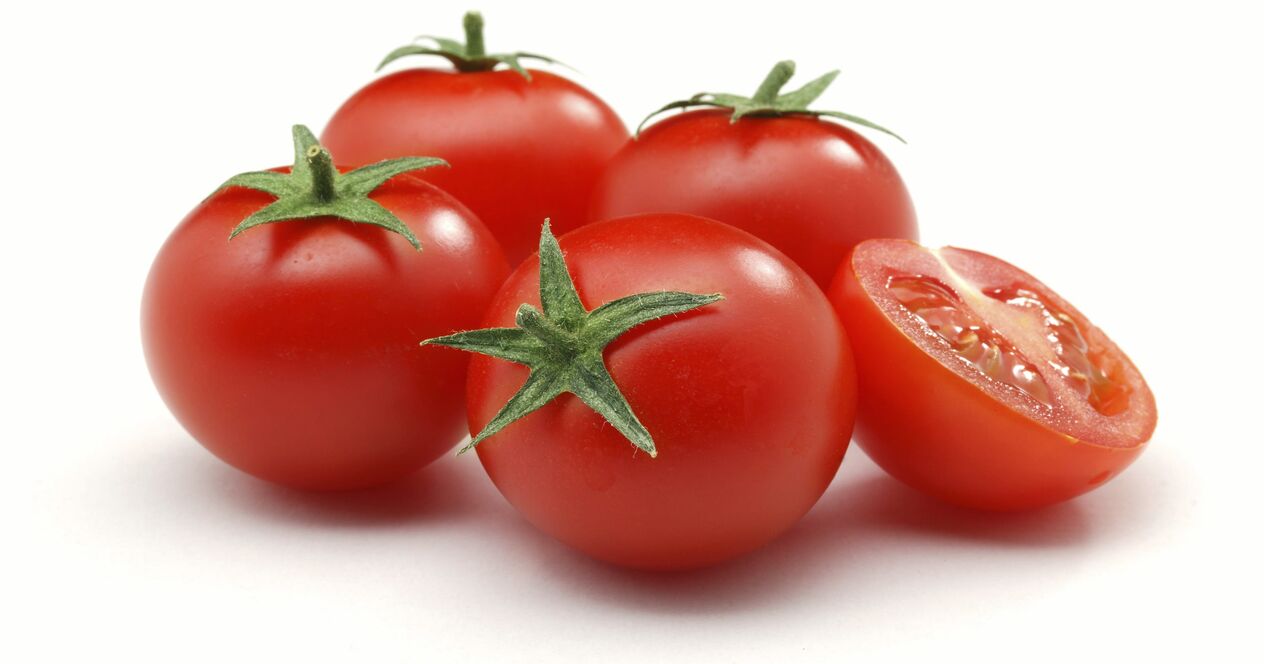
The most effective way to treat the disease at home is applying compresses.
Before using any home remedy for varicose veins, you should make sure that there is no risk of developing an allergy to any of the ingredients in the formula. It is almost impossible to get rid of varicose veins in the legs with procedures done at home. But the beneficial effect of the compress described above, which eliminates its causes and symptoms, thins the blood and strengthens the walls of the veins, is an important component of the treatment complex.
Proper nutrition
Varicose veins often appear not only due to damage to the vein wall, but also due to thickening of the blood. To liquefy blood cells, improve metabolism and restore blood microcirculation, patients need to make certain adjustments to their daily diet.
For a start, you should exclude from the menu all sweet, fatty and fried foods, as well as flour products. Low-fat meat, vegetables, fruits, fermented dairy products, and cereals should be popular products on the table of patients with varicose veins. On the basis of these products, it is quite possible to build a healthy but also diverse eating menu, in addition, such dishes help to thin the blood and eliminate the symptoms of the disease.
Tips and tricks
As an additional measure for varicose veins, the patient also needs to wear compression underwear, which evenly distributes the load on the legs, preventing the appearance of unpleasant symptoms and the progression of the disease. You can also replace specialized underwear with ordinary elastic bandages, the effect of their use can be no less noticeable. The only drawback of the elastic band is the relative inconvenience in fixing this device.
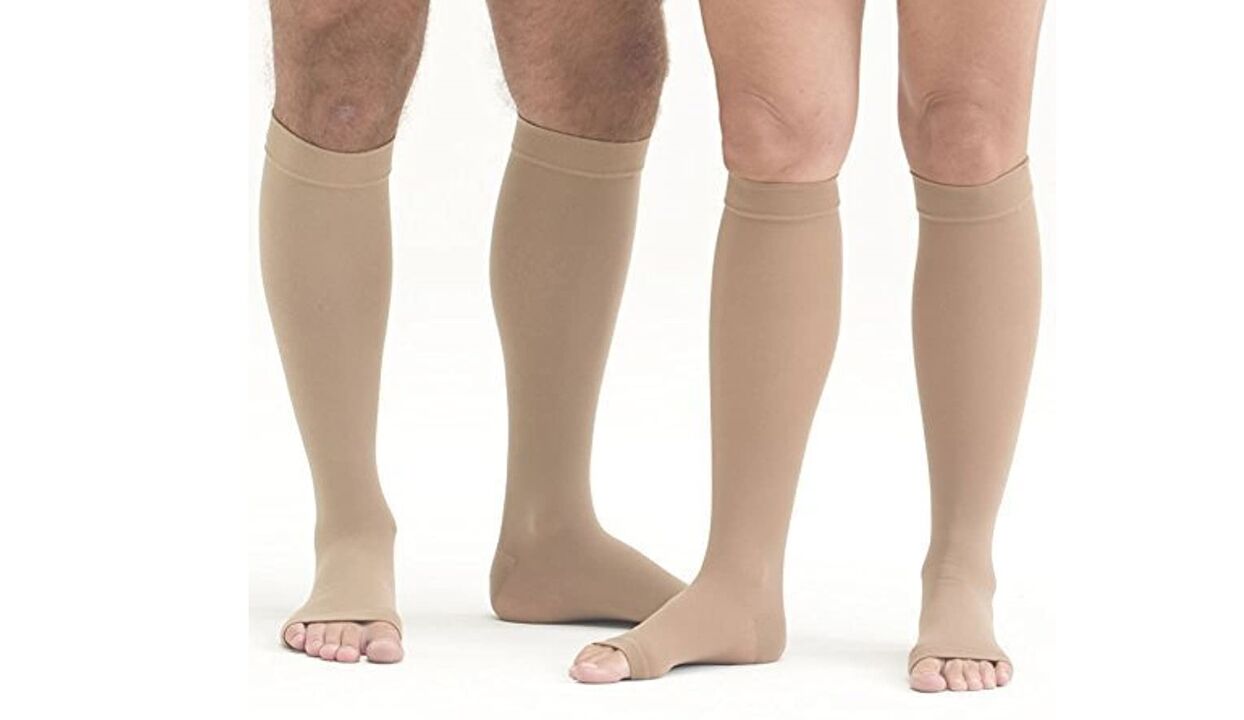
For the prevention and treatment of varicose veins, compression underwear should be worn.
Walking at a leisurely pace during short walks also normalizes blood circulation and improves the delivery of oxygen and nutrients to cells and tissues. But this method can be used only as an additional component of a medical complex if there are no contraindications. As an additional method for the treatment of pathologies of veins and blood vessels, a contrast shower can be called. Regular use of this procedure improves blood circulation, promotes the repair of skin cells, and also reduces swelling and pain. It should not be forgotten that for any damage to the vascular system, you can only take a warm bath, but not a hot one.
It is almost impossible to completely cure varicose veins through treatment with any one technique. Only a complex combination of several ways to combat the causes of varicose veins will allow you to forget about the unpleasant symptoms of this disease forever.
To avoid complications, you should not self-medicate. Before using any, even the most harmless agent, you should consult your doctor.












































